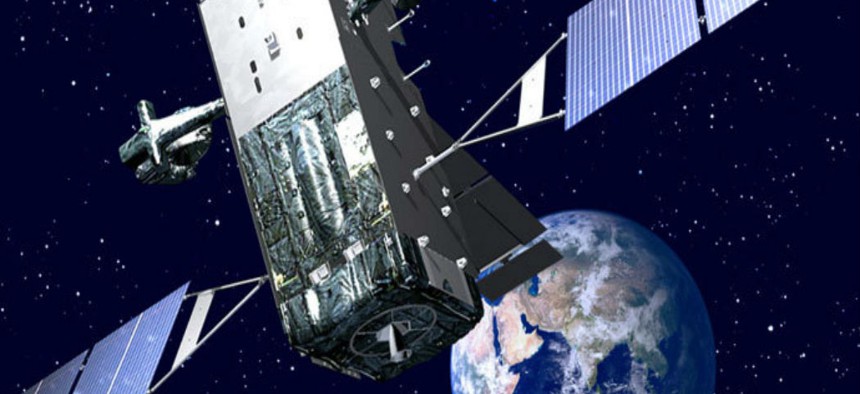
Air Force charts Wideband Global Satellite future
An Air Force analysis of alternatives considers a future plan for its constellation of Wideband Global Satellites.
The Air Force has embarked upon a formal Analysis of Alternatives (AoA) to determine a path for its constellation of Wideband Global Satellites(WGS) – a course which could result in wider use of existing commercial technologies or an effort to engineer and build a new dedicated constellation of satellites, Air Force and industry officials said.
The first group of WGS is expected to begin coming to the end of its service life in coming decades, spurring a need for a modernization strategy for the technology.
Air Force officials told Defense Systems the AoA will evaluate alternatives spanning air, space, cyberspace, and ground systems to address the required wideband communications capabilities in both benign and contested environments.
Frank Kendall, former Undersecretary of Defense for Acquisition, Technology and Logistics, formally signed an Acquisition Decision Memorandum for the Wideband Communications Service AoA on Dec. 23, 2016, said Air Force spokeswoman Capt. Annmarie Annicelli.
“We look forward to working with our industry and international partners over the course of the AoA to determine the best mix of military and commercial SATCOM to ensure the SATCOM architecture is resilient in a future contested environment," Annicelli added.
Annicelli said that the AoA will provide an analytical comparison of the operational effectiveness, resiliency, suitability, and life-cycle costs to enable the full consideration of possible trade-offs among cost, schedule, and performance for each alternative.
The increasingly high-threat environment, referred to by Annicelli, includes anti-satellite weapons and other emerging technologies which have increased the risk to the functionality of operational satellites. Such a phenomenon underscores the need to modernize or replace the existing aging constellation, officials explain.
China’s well-known development of long-range, anti-satellite, or ASAT, weapons has introduced a serious threat to the effectiveness and sustainment of the U.S. space operation, Air Force leaders said.
“Potential adversaries have taken notice of how we use space and have taken steps to replicate those capabilities for their own use and to devise capabilities to take them away from us if they ever got into a conflict with us,” said Winston Beauchamp, Deputy Under Secretary of the Air Force for Space said in an interview with Defense Systems last year.
As part of this analysis, Air Force officials explain that the service is seeking the optimal mixture of commercial and military satellites necessary to achieve needed future missions in a higher threat environment.
During recent wars in Iraq and Afghanistan, the U.S. military drew from both commercial and military satellites. This mixture is a key focus of the ongoing AoA designed to map a future DOD plan.
Unlike commercial satellites which largely operate in the Ku-band portion of the spectrum, military frequencies tend to operate in the X-band and KA-band frequencies; the KA-band is split between military and commercial, said Skot Butler, President of Intelsat General.
As opposed to narrow-band satellites which operate with UHF frequencies typically measured in Kilohertz, a wideband would be measured in Megahertz, he said.
Among other things, wideband satellites help transmit voice and video streams, such as those from drones.
“Things like Internet cafes for morale, welfare and recreation networks, things like the transport of the video that comes off of ISR platform. Those kinds of things all fall into the wideband category,” Butler said.
Intelsat General is among a handful of commercial satellite operators with emerging technologies now being offered to Air Force and Pentagon officials considering various alternatives.
Historically, the military has largely used wide beams which cover an entire continent. However now, the military is increasingly interested in smaller beams able to connect with smaller, more mobile terminals -- such as something an individual soldier could carry.
“What we’re bringing now is a new architecture which is a spot beam architecture,” Butler said.
“Smaller more focused beams allow you to do much higher data rates into smaller terminals which is certainly somewhere that the military is going.”
Satellite terminals typically consist of an antenna, reflector or dish and some sort of modem where the network is on the ground.

